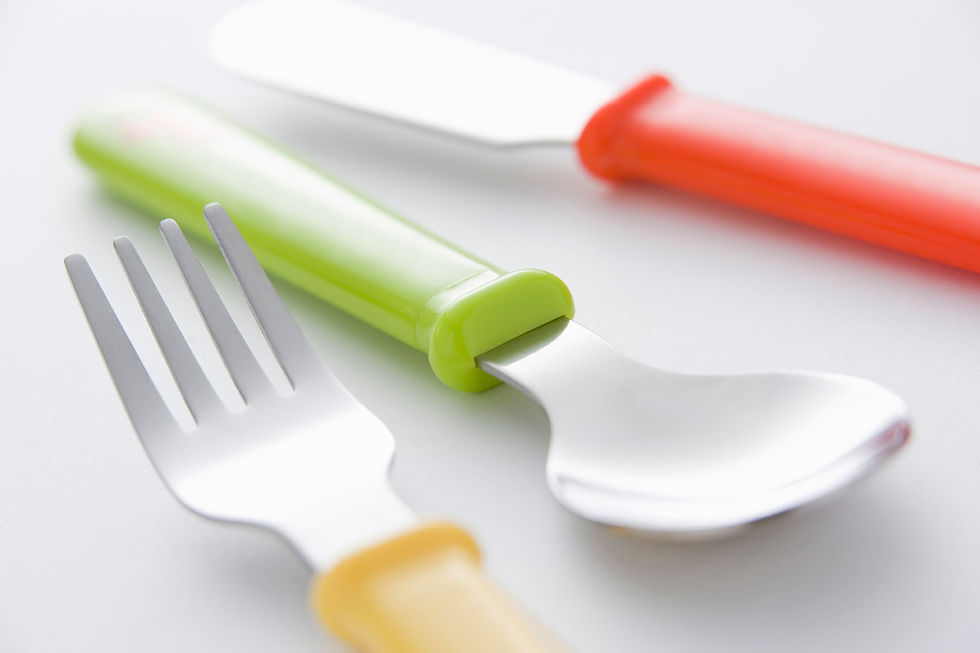5 sources of every day plastic you might not have known about
- Jessica Evans
- Mar 14, 2019
- 4 min read
Plastic is everywhere, and it’s a huge problem for our environment to tackle. (If you want to find out why, click here.) You may be doing your best to cut out plastic from your life as much as possible and that’s super commendable! But because plastic is so ubiquitous, it can be tough to realise just how much of it is in your daily life, and just where it hides. Here are some plastic items you make use of every day that might surprise you.
1. Brushes
Toothbrushes, hair brushes, combs, nail brushes, dog brushes, sticky rollers, pastry brushes. They all consist either entirely of plastic or mostly of plastic. So what can you do about it? Next time you’re in the market for a new brush of some kind, see if you can find one with a wooden handle or one that consists at least partly of wood or bamboo. Toothbrushes, hairbrushes and nailbrushes like this do exist, and the only plastic on them is the bristles! Don’t kick yourself if you have plastic brushes at the moment. Rather stick with them and use them until you can’t anymore before you replace them.

2. Toiletries
You may already know about shampoo bars and wonderful stuff like that, but have you considered ear buds? Toothpaste? Your razor? Your loofah? Perhaps not. Well, surprise surprise, they have a lot of plastic! Luckily, they can be swapped out at the end of their life span, just like brushes. Opt for paper earbuds, a metal razor, home made toothpaste or toothpaste in a refillable jar.

3. Kitchen supplies
I’ve already mentioned a pastry brush, but just think about all the utensils, tupperwares, sandwich bags and plastic wrap hiding in your kitchen cupboards! The upside for plastics like tupperwares and utensils is that they last long – they’re not single use. But if you want to slowly phase out as much plastic from your kitchen as possible, choose glass containers (many come with plastic lids but that’s way better than plastic everything). Bamboo crockery is on the rise, and you can find some adorable sets of plates, forks, bowls, and spoons for kids made out of biodegradable bamboo fibres. You can also find bamboo lunch boxes now! Have a look around your local grocery shop’s kitchen section – you’d be surprised at what you find.
When it comes to single use kitchen plastics there's quite a bit you can do. Instead of plastic wrap, buy some reusable bees wax sheets to keep your food fresh next time. Find some reusable ziplock sandwich bags for your lunch box. And the next time you get take-aways, ask for your meal without the plastic cutlery and rather use some of your own.

4. Tissues and wipes
Often, these are things we cannot live without. Personally, I get terrible hay fever and I always need tissues on hand. The problem is, a lot of packs of tissues come in plastic. Tissue boxes have the plastic lip at the top through which you pull the tissues, and portable packs of tissues are packaged in plastic pouches. Now that I’ve noticed this, I reach for tissue boxes without the plastic lip (the ones that only consist of cardboard and have the U-shape down the front), and I refill a reusable fabric tissue holder with tissues from that box.
When it comes to wipes, plastic is also insanely ubiquitous. If you have children you may find you go through countless packs of wipes every month, or even every week. This is a bit more challenging to solve because wet wipes need to be in plastic, otherwise they dry out or mess everywhere. Try looking up some DIYs on how to make your own wipes using cotton pads and make-up remover. At home you can store these in a cute jar or a reusable sandwich bag, and if you’re lugging around a huge baby bag, they’ll slip in just fine.
5. Sachets
Take a moment and consider how many instant cappuccino/hot chocolate sachets you have used in the past year. All of that is plastic and all of it is not recyclable. The same goes for those pods you put in your coffee machine. When you can buy coffee grounds, jars full of instant coffee and jars of hot chocolate, it seems a bit wasteful to be using the amount of plastic you use for one single hot drink, don’t you think? Be mindful of this next time you buy a new box of those mocha pods.
When it comes to stock sachets and instant noodle flavouring, try to opt for sachet-free alternatives - they are out there!

As I said earlier, the goal to reduce your use of plastics is noble, but it comes at the cost of making sacrifices. It doesn’t always have to be like that, though. It can be as easy as swapping out some of the plastic items you use every day for reusable or biodegradable alternatives. It’s totally possible to reduce your plastic waste A LOT. You’ll find that the more you reduce, the easier it will become for you to notice unnecessary sources of plastic in your life and to cut them out. Good luck!
#bitesizedsci #johannesburg #makhanda #zerowaste #plasticwaste #whyisplasticbad #plasticpollution #reducereuserecycle #5sourcesofeverydayplastic #healthyhouseholds #brushes #toiletries #kitchensupplies #tissuesandwipes #sachets #ecofriendly #ecofriendlyliving #howtoreduceyourplasticwaste #plasticfreeliving #southafrica #easyscience #everydayscience #JessicaEvans






Comments